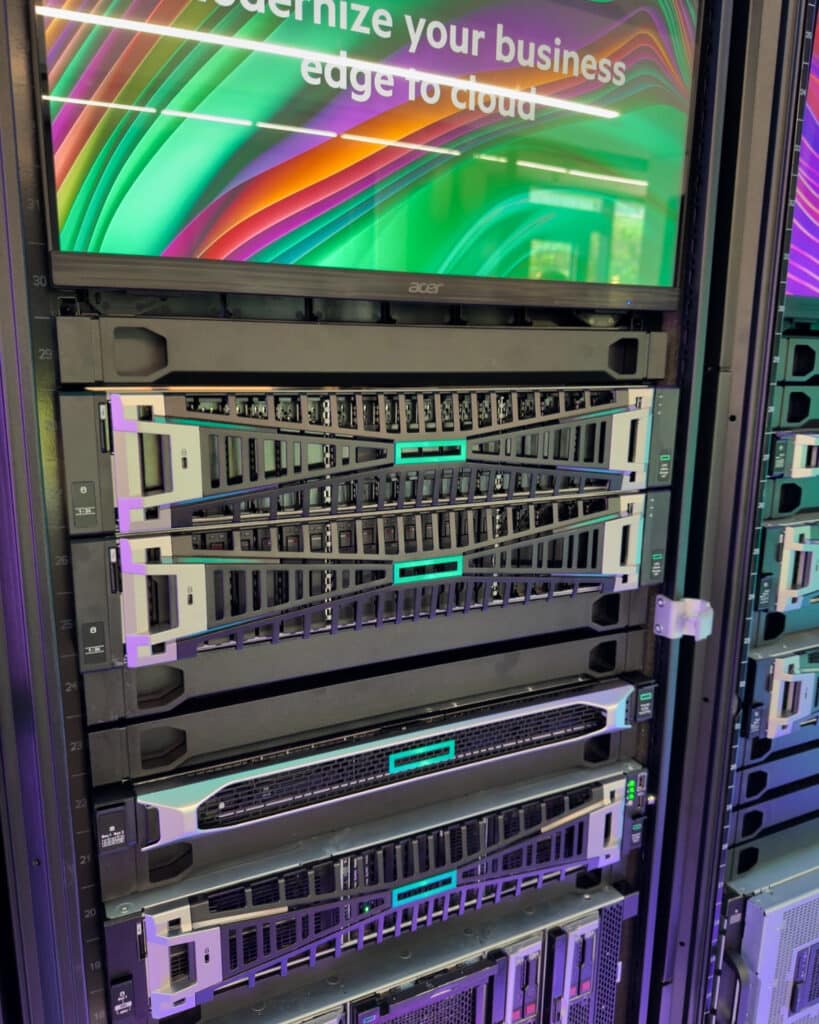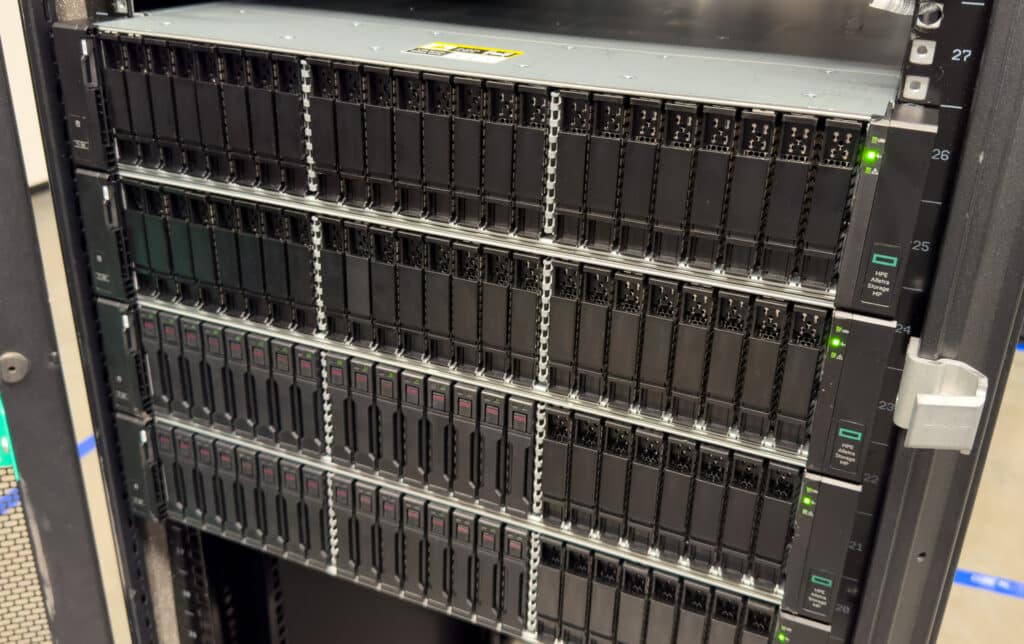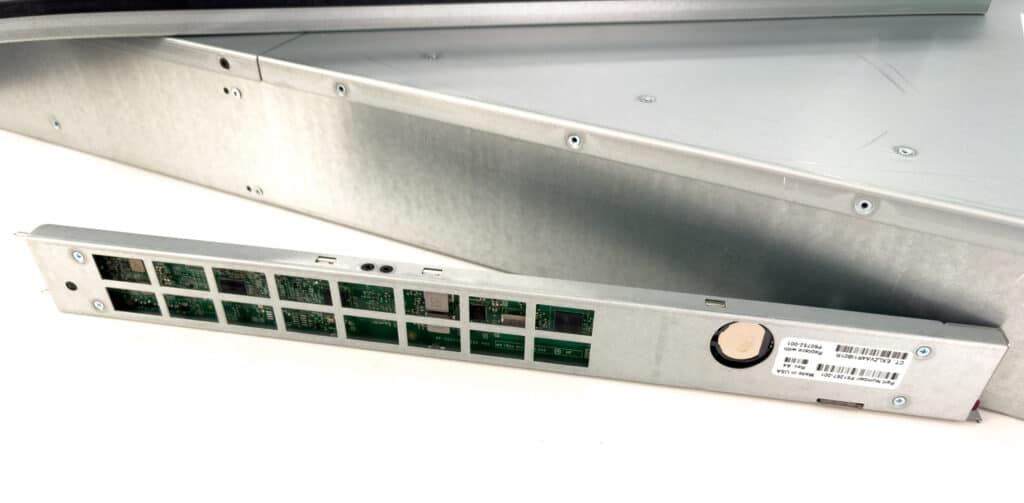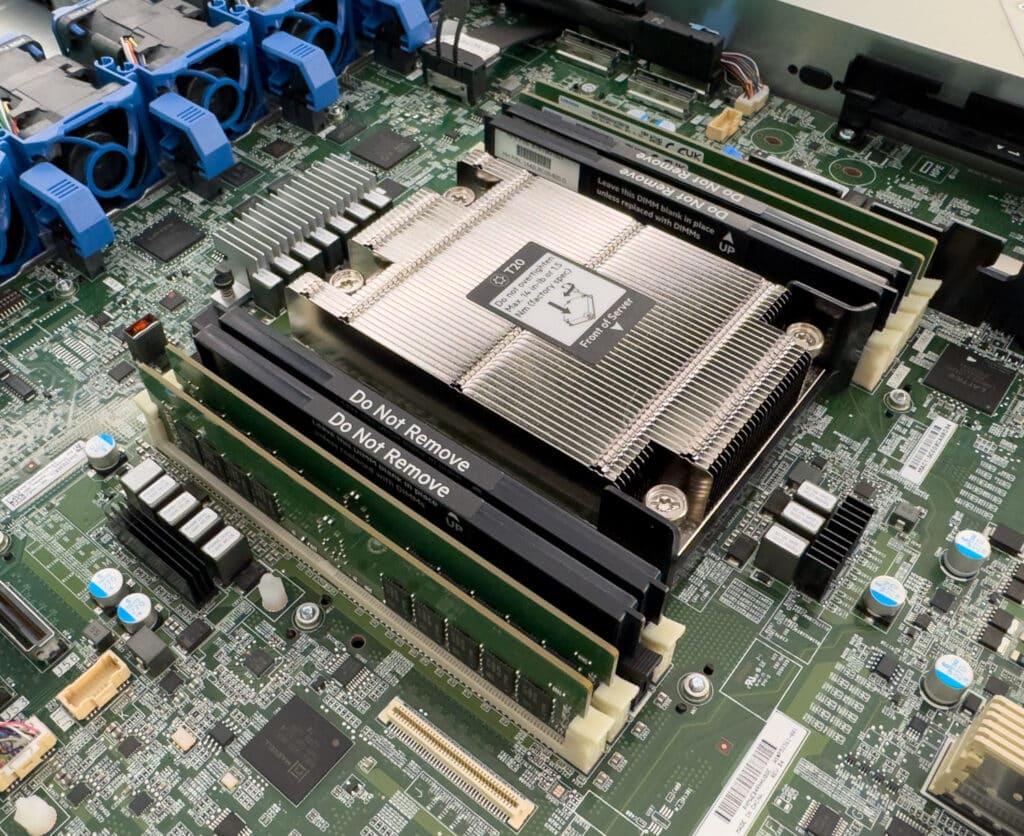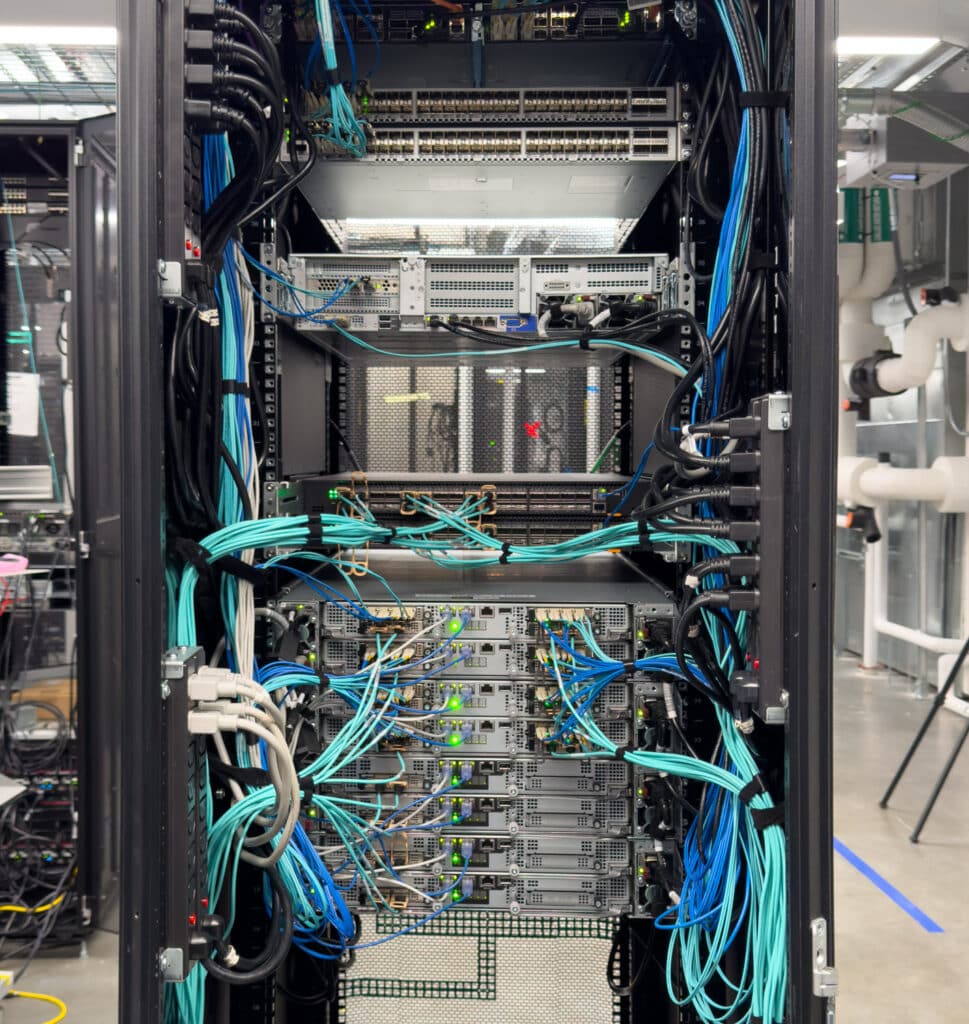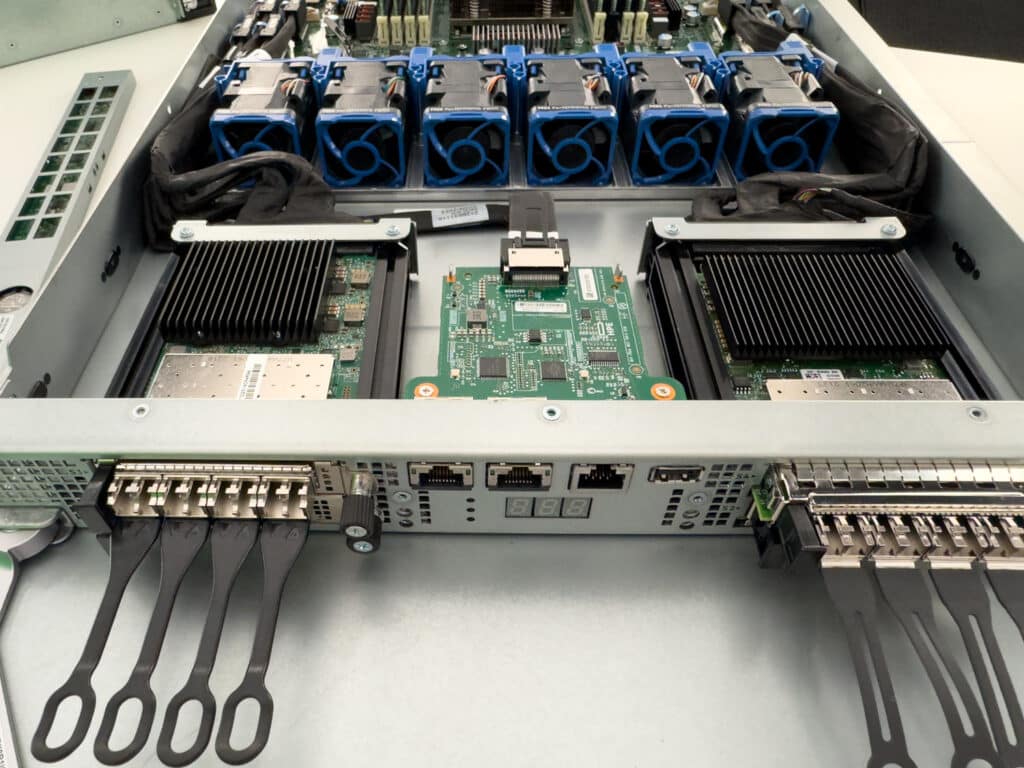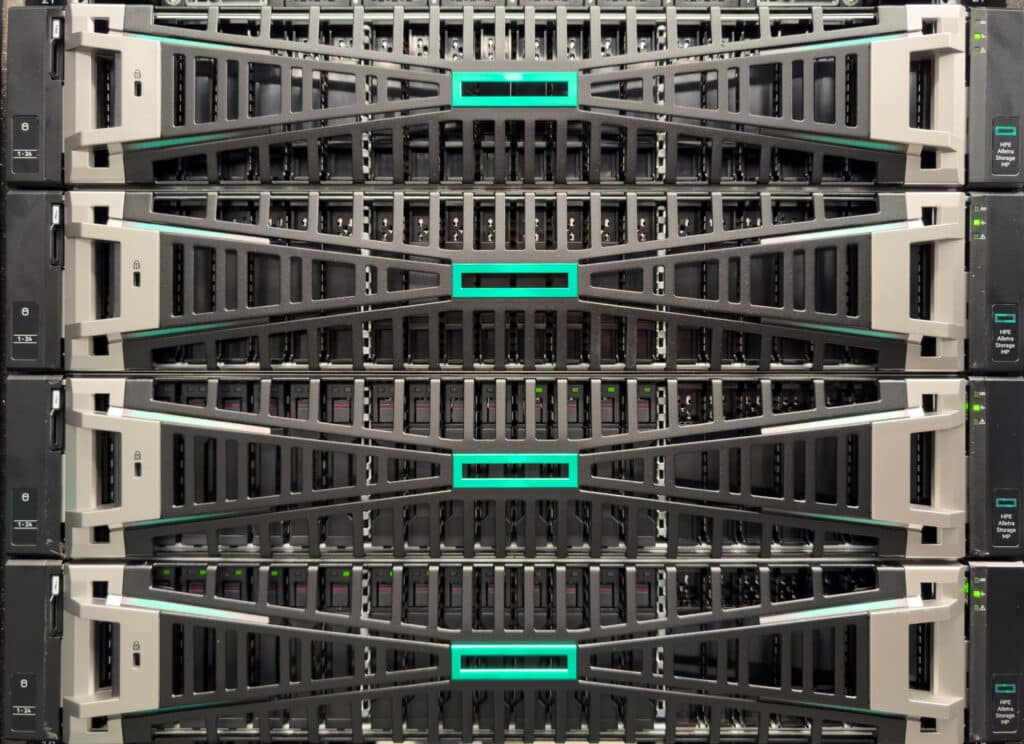HPE Alletra MP B10000, available through HPE GreenLake Cloud, is designed for optimized, scalable, mission-critical workloads.
HPE Alletra Storage MP B10000 is a cloud-native data infrastructure available through the HPE GreenLake cloud, bringing the speed and agility of the cloud experience to on-premises storage. The HPE Alletra Storage MP B10000 is HPE’s next-generation storage solution leveraging the new HPE Alletra Storage MP (Multi-Protocol) hardware platform supporting file, block, and object storage personas within a unified system. It is part of HPE’s broader vision to simplify data infrastructure by providing high-performance, cloud-native, and highly scalable storage solutions. The solution is powered by software-defined architecture designed to handle workloads across traditional and modern cloud-native applications.
This common hardware platform, powered by AMD EPYC™ embedded processors, supports multiple software personas, enabling multi-protocol access—file, block, and object. Now, organizations can streamline their storage infrastructure and reduce the complexity of managing separate systems for different data types. It provides consistent performance across various applications, and because it’s cloud-native, it seamlessly integrates with hybrid cloud environments.
HPE Alletra Storage MP B10000
HPE Alletra Storage MP B10000 offers mission-critical, software-defined, scale-out block storage with a 100% data availability guarantee. It delivers the scale, resiliency, and performance needed for mission-critical applications, including large databases and cloud-native apps (such as AI and machine learning), enabling organizations to meet their business objectives.
By leveraging the HPE GreenLake Cloud—a cloud-native operations platform—organizations can simplify their IT operations, provisioning, and scaling from a single pane of glass while benefiting from AI-driven operations management. This proactive management helps optimize storage performance, reduce downtime, and address issues before they become critical.
One of the most significant advantages of the B10000 is its ability to scale on demand in multiple dimensions—breaking down the HA paradigm that is so common in legacy architectures. The disaggregated architecture of the B10000 offers separation of compute, storage, and networking resources and allows businesses to scale those resources independently based on workload needs. Organizations can seamlessly add storage capacity or compute nodes without overprovisioning as data storage requirements grow. This scalability ensures that companies can handle spikes in data demands efficiently, whether it’s for high-performance applications or more routine operations.
HPE GreenLake Cloud delivers AI-driven insights that help optimize storage environments by predicting potential issues, workload drifts, and resource bottlenecks. This automation significantly reduces the burden on IT teams, allowing them to focus on more strategic initiatives rather than day-to-day infrastructure management. The platform also offers detailed visibility into performance metrics, sustainability goals, and power consumption trends, enabling businesses to fine-tune their environments to meet operational and environmental targets.
HPE GreenLake Cloud seamlessly integrates with hyperscalers, offering a true hybrid cloud architecture, allowing organizations to manage workloads across on-premises and cloud environments. Using the HPE Alletra Storage MP scalable hardware and the NVMe-over-TCP protocol, the B10000 delivers the high-speed, low-latency performance necessary for hybrid and cloud-native applications.
Security is always top of mind when deploying cloud services, and the B10000 with AMD EPYC processors addresses the issue head-on. The AMD EPYC processors feature an independent onboard AMD Security Processor, with capabilities including Secure Encrypted Virtualization (SEV) for securely isolating hypervisors and virtual machines (VMs) in virtualized storage environments and secure Memory Encryption (SME) for defending against unauthorized memory access. This ensures businesses can leverage cloud services while maintaining control and data sovereignty, which is critical for industries with strict regulatory requirements.
HPE Alletra Storage MP Hardware Overview
The move to HPE Alletra Storage MP hardware gives HPE what we’d call a “universal storage platform.” This is a significant shift from traditional SAN architecture that uses purpose-built appliance hardware. While that methodology has been the standard in storage for ages, it’s not easy to adopt new technology in those appliances. With HPE Alletra Storage MP, HPE could use its ProLiant server heritage for more efficient design. For instance, HPE Alletra Storage MP offers components like OCP 3.0 slots for I/O, meaning customers can easily configure the system for faster connectivity.
The systems can be self-contained into a single 2U chassis with two I/O modules (controllers) and storage. If deploying a switched fabric, JBOFs, which is the same chassis with different I/O modules, will be added.
Interestingly, customers utilizing HPE Alletra Storage MP B10000 no longer need to scale controllers in HA pairs—they can deploy a new chassis with a single controller, making it easier to grow in smaller segments. The controllers don’t have to be matched either, so customers can take advantage of controllers with new technologies like more powerful CPUs or faster networking interfaces without matching the existing HPE Alletra Storage MP infrastructure. HPE supports up to four controller nodes today, with plans to expand that scale.
Customers will find the Chassis Discovery Module (CDM) useful regardless of the initial deployment or the addition of additional modules. At initial configuration, the administrator or partner will connect to the CDM for initial setup. Once the cluster is established, adding additional units via auto-discovery is easy, thanks to the CDM.
At its core, HPE Alletra Storage MP B10000 utilizes AMD EPYC CPUs with multiple core options to meet varying customer needs, offering 32-core, 16-core, and 8-core configurations. This flexibility ensures that organizations can tailor the platform’s performance and capacity to specific workload requirements, whether for high-throughput, compute-intensive applications or more modest storage demands. The AMD EPYC processors’ combination of high core density, energy efficiency, and 128 PCIe lane support is critical for optimizing performance, allowing for scalable and efficient storage solutions. HPE ensures the B10000 can cater to small-scale environments and large-scale, mission-critical operations by providing a range of core options.
HPE also continues to expand its SSD support in the B10000, launching 30.72TB and 15.36TB QLC SSDs in October. This further enhances the B10000’s capability to deliver high-capacity, cost-efficient storage for read-heavy workloads. By integrating QLC, HPE allows organizations to scale their storage infrastructure more affordably, making it ideal for use cases such as data archiving, backup, and big data analytics.HPE is making a big push to introduce QLC SSDs, which will help customers finally move off HDD-based or high-capacity hybrid storage systems to entirely all-flash storage. This has significant savings potential as customers can reduce hardware and power costs and increase performance. HPE offers TLC SSDs in capacities up to 30.72TB for more latency-sensitive, write-heavy workloads.
Those are all raw capacities, though; the fourth release of HPE Alletra Storage MP B10000 introduced an HPE StoreMore Guarantee. This is in addition to the 4:1 data compaction capability, utilizing a combination of deduplication and compression to reduce storage consumption significantly. By eliminating redundant data and compressing it efficiently, the system can store more information in a smaller physical footprint, leading to cost savings and optimized resource usage. Additionally, AI-driven insights play a crucial role in this process, helping to identify data patterns and optimize the compaction techniques without sacrificing performance. At the top end, customers can scale out to an incredible 16PB of effective capacity utilizing 192 30.72TB QLC SSDs across eight JBOFs.
Technical Specifications: HPE Alletra Storage MP B10000 |
|
|---|---|
| Drive Description | NVMe SSD: 1.92TB, 3.84TB, 7.68TB, 15.36TB, 30.72TB |
| Capacity | Up to 368 TB per enclosure Switchless: up to 1.1 PB per solution Switched: up to 5.8 PB per solution |
| Host Interface | 32Gb/s Fibre Channel, 10/25GbE iSCSI |
| Enclosures | 2U form factor of HPE Alletra Storage MP |
| Storage Controller | 3rd Gen AMD EPYC 32-core, 16-core, 8-core Support for 2, 3, and 4 controller nodes per solution |
| Maximum Drives per Enclosure | 24 per enclosure Switchless: up to 2 expansion shelves per solution Switched: up to 16 expansion shelves per solution |
| Cache | 512 GB cache memory per 32-core Controller Node 256 GB cache memory per 16-core Controller Node 256 GB cache memory per 8-core Controller Node |
| Availability Features | Redundant power, cooling modules, and fans; Minimum of dual redundant controller nodes |
| Compatible Operating Systems | Microsoft® Windows® Server, Microsoft Hyper-V™ VMware ESX and ESXi Red Hat® Enterprise Linux® SUSE® Linux Enterprise Server (SLES) |
| Warranty | 1-year, parts-only warranty for hardware components |
HPE Alletra Storage MP B10000 with Switched Fabric
The B10000’s switched fabric architecture offers significant flexibility and resiliency by enabling a fully disaggregated design. This means compute, storage, and networking resources can be scaled independently, allowing businesses to tailor their infrastructure to specific workload needs without over-provisioning.
For example, if a workload requires more compute power but not additional storage, more compute nodes can be added without expanding the storage footprint, and vice versa. Every HPE Alletra Storage MP controller in this configuration can see all the storage JBOFs. This enables HPE to guarantee 100% data availability, ensuring mission-critical reliability.
HPE Alletra Storage MP B10000 can better handle high-bandwidth, low-latency workloads with a switched fabric by dynamically directing data traffic through the most optimal paths. This reduces bottlenecks and improves overall performance, especially in environments with mixed workloads where both block and file storage are in play. The architecture supports increased parallelism, allowing the system to scale out as needed while maintaining consistent performance.
This upgrade also enhances the system’s ability to support multi-protocol environments, ensuring that file, block, and object storage requests are processed with higher throughput and reliability. The fabric is crucial in delivering the flexibility and speed that modern data-centric applications demand, particularly in hybrid cloud setups where data movement and access patterns are more complex.
NVMe over TCP in HPE Alletra Storage MP B10000
One of the critical innovations in the B10000 is adding NVMe over TCP (NVMe-oF/TCP) support. This protocol extension allows NVMe’s high-performance benefits to be delivered over conventional TCP/IP networks, making it an attractive solution for businesses looking to improve storage efficiency without needing complex or costly networking hardware upgrades.
NVMe over TCP bridges the gap between cutting-edge storage performance and more accessible, widely used network infrastructure. Traditional NVMe-over-Fabrics implementations, such as those based on Fibre Channel or InfiniBand, deliver high performance but often require specialized and costly hardware. In contrast, NVMe-oF/TCP operates over standard Ethernet, which is already prevalent in most data centers. This significantly reduces the barrier to entry for organizations seeking to enhance their storage infrastructure without overhauling their network systems while also being prepared for modern workloads.
While TCP adds a small amount of overhead compared to more direct NVMe-oF protocols, NVMe over TCP still substantially improves over older storage transport protocols like iSCSI. It allows for low-latency, high-throughput access to storage across the same Ethernet networks that organizations already use for other data and application traffic. This means that enterprises can scale their storage performance while maintaining the simplicity of a single network architecture.
Another benefit of NVMe over TCP is that it integrates smoothly with existing network management tools. Since it operates on the same infrastructure as traditional TCP/IP, IT departments can use familiar tools and protocols to manage and troubleshoot NVMe over TCP environments. This simplifies management and reduces the learning curve compared to more specialized NVMe-oF options like Fibre Channel.
Including NVMe over TCP enhances the overall flexibility of the B10000 platform. It allows users to deploy high-performance storage over standard Ethernet networks, facilitating easier, more scalable deployments that meet the needs of hybrid cloud environments and large-scale data centers.
Conclusion
HPE Alletra Storage MP B10000, through its integration with HPE GreenLake Cloud Platform, delivers a disaggregated, flexible architecture that addresses the evolving demands of modern enterprises with AI-powered Cloud operations. By separating compute, storage, and networking resources, the B10000 architecture allows organizations to scale these components independently, ensuring optimal performance. This flexibility is particularly beneficial for businesses with unpredictable or rapidly growing data workloads, as they can adjust resources based on real-time needs.
The platform’s support for NVMe-over-Fabrics ensures high throughput and low-latency access to data, making it ideal for mission-critical applications with HPE’s 100% data availability guarantee. Combined with the cloud-native experience of HPE GreenLake, businesses gain the benefits of scalability, AI-driven management, and a pay-as-you-go consumption model, all while maintaining control over their infrastructure. HPE Alletra Storage MP B10000, powered by AMD EPYC embedded processors, provides the high performance and energy efficiency needed for workload consolidation and data security features to help keep data safe. These capabilities provide a powerful solution for enterprises looking to future-proof their storage environments, offering the flexibility to efficiently meet current and future workload demands.
Engage with StorageReview
Newsletter | YouTube | Podcast iTunes/Spotify | Instagram | Twitter | TikTok | RSS Feed

